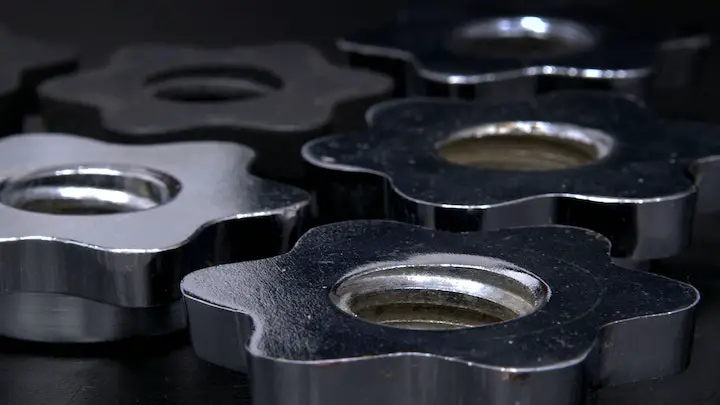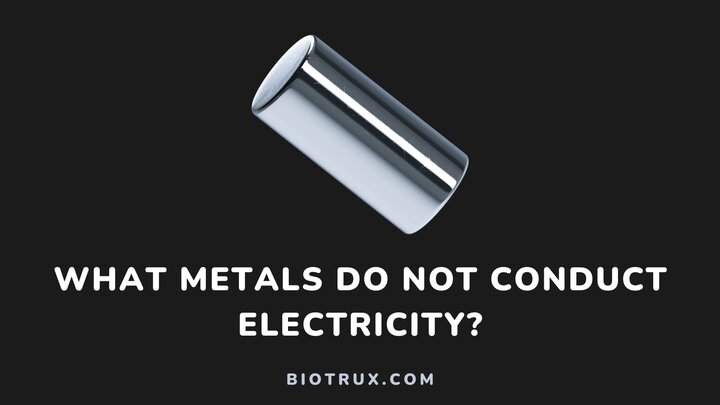All metals conduct electricity and heat. However, this conductivity varies and depends on the state of the electrons present in each metal. Those that allow electricity to flow through them with little or no barrier are known as good conductors.
Metals with very stable electrons, on the other hand, give little room for the flow of electricity. Such metals are called semi-conductors or poor conductors.
Examples of such metals include bismuth, lead, and titanium. Another way to know if a metal is a good conductor or not, you must be familiar with the electrical conductivity and resistance of such metals.
In this guide, I will be discussing these non-conducting metals, their electrical conductivity/resistance, and their uses.
What is Electrical Conductivity?
Electrical conductivity is the measure of how much electric current a material can allow to flow through it. Metals that do not conduct or are poor conductors of electricity usually have low electrical conductivity.
You can calculate the electrical conductivity of any material using:
σ = 1/ρ
Where:
- σ = electrical conductivity
- ρ = electrical resistivity
The unit for electrical conductivity is Siemens per meter (S/m).
What is Electrical Resistivity?
As you can see from the previous formula, electrical conductivity is inversely proportional to electricity, This implies that electrical resistivity opposes conductivity or is a measure of how much a material restricts the flow of electricity.
This means metals that do not conduct electricity have a high electrical resistivity. Hence, the formula for calculating resistivity is:
ρ = RA/l
Where:
- ρ = electrical resistivity
- R = resistance
- A = cross-sectional area
Examples of Metals That Do Not Conduct Electricity

The major reason why some metals are poor conductors of electricity or heat is that their electrical resistance is very high. Let’s take a look at some of these metals:
1. Bismuth (Bi)
Bismuth is a white, brittle, crystal-like metal with a pinkish tint. Its electrical conductivity and resistivity are 7.75 × 105 S/m and 1290 nΏ.m respectively.
Bismuth is also diamagnetic and has a thermal conductivity of 10 W/mK. Hence, it is a bad conductor of heat and only melts when exposed to high voltage in fuses.
2. Tungsten (W)
Tungsten is a natural metal that rarely occurs in isolation. It combines with other metals and was first separated in 1783.
At 20°C, the rare metal has an electrical conductivity of 1.82×107 S/m and a resistance of 5.49×10-8 nΏ.m. Under normal (standard) conditions, Tungsten does not conduct electricity.
It only conducts electric current at high temperatures. Tungsten has a thermal conductivity of 175W/mK, hence, it is a poor conductor of heat.
3. Lead (Pb)
Lead is a soft, dense, and silver-like metal with traces of blue tints. At 20°C, It has an electrical conductivity of 4.87×106 S/m and resistivity of 2.05×10-7 nΏ.m.
It has a low melting point and a thermal conductivity of 34.7 W/mK. Hence, lead is a poor conductor of heat.
4. Titanium (Ti)
Titanium is a durable transition metal with a silver appearance. It only occurs in nature as an oxide and its metallic state does not conduct electricity well.
It has an electrical conductivity of 1.798×106 S/m and a resistance of 5.56×10-7 nΏ.m. Titanium is also anti-corrosive in seawater, chlorine, and aqua regia.
It has a low density and a thermal conductivity of 17 W/mK. Hence, it is a poor conductor of heat.
5. Aluminum (Al)
Unlike silver, copper, and gold, aluminum is a poor conductor of electricity. It has an electrical conductivity of 3.5×107 S/m and a resistivity of 2.82×10-8 nΏ.m.
Aluminum is also a bad conductor of heat with a thermal conductivity of 205.0 W/mK.
How to Make a Metal Non-Conductive
To make metals not conduct electricity is to cover them with materials that do not conduct electricity. Examples of good insulators include plastic, paper, ceramic, and porcelain.
Before choosing any insulating material for metals that do not or poorly conduct electricity, you must consider:
- The degree of voltage the metal will be conducting. This is because some insulators are not ideal for low-voltage.
- How you want the metal to appear after coating and the physical properties of the insulator. Some insulators are weather-proof and can significantly increase the weight of the metal.
Uses of Non-Conductive Metals
1. Titanium
Titanium is a necessity for most paints. House paints, artist paints, paper, and enamels contain titanium in the form of titanium(IV)oxide.
It is also a great option for surgery because it connects well with bones. Parts of the body where it is mostly featured include the hip joint (during replacements) and the tooth (during implants).
2. Bismuth
Bismuth is a major component of fire extinguishers, fire detectors, and electric fuses. Interestingly, they are also industrious in the manufacturing of acrylonitrile (the basic form of plastic or synthetic fiber). Certain drugs also contain bismuth.
3. Tungsten
Electrical uses of tungsten include electrodes, field emitters, and heating elements. The non-conductive metal also features filaments in light bulbs and cathode ray containers.
They combine well with metal alloys to give them extreme durability.
4. Lead
Lead still features in the manufacturing of batteries, crystal glass, and cable plating. Most weights you see in gyms, radiation shields, and diving belts have lead properties. You can also store corrosive liquid using Lead.
5. Aluminum
Aluminum features is a major raw material for the production of cans, foils, window frames, and kitchen utensils. The aviation industry also uses aluminum in the manufacture of airplane parts because of its lightweight.
FAQs
Are all metals conductive?
All metals are conductive but in varying degrees.
There are those with high conductivity like silver and copper and those with poor conductivity like bismuth and aluminum.
Will aluminum rust?
Aluminum rust due to exposure.
Aluminum oxide (a derivative of aluminum), on the other hand, is very resistant to corrosion.
What metal doesn’t rust?
Platinum, gold, and silver do not rust.
This is because they are highly non-reactive.
Conclusion
Metals are natural conductors of electricity. However, some metals conduct better than others. This is the case for bismuth, tungsten, lead, titanium, and aluminum.
There are other non-conductive metals. The key to identifying them is to compare their electrical conductivity with resistivity.
When the difference between the conductivity and resistivity of a metal is close to a negative or at a negative value, such metal will likely be a poor conductor.
I hope you found this guide helpful. On the flip side, most metals conduct electricity well. To discover these metals, please see my guide on metals that conduct electricity.
Thanks for reading.
